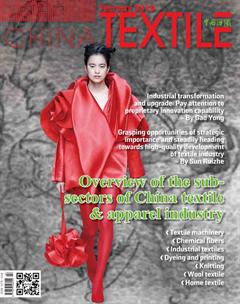Dear readers
When I am writing this letter, the World Economic Forum (WEF) is on right now in Davos, Switzerland, a wintertime glow that enlightens the economic visibility by the big shots coming from the political, economic, industrial and professional institutions on a luxury trip to this snow-covered, mountain-hidden small town. This world routine drama presents a different repertoire for 2019 program, featuring the digitalization as one of the global highlights we are experiencing now.
As the technology is making progress, some of the manufacturing operations have already been managed by highly automated system digitalized from every step of the on-stream production with input/output signals captured by online sensors to be sent to the concentrated control centre. Artificial Intelligence (AI) is an advanced version of this smart control system now being widely promoted to be integrated into the digitalization program for more efficient and quality-assured production.
While we move on with the new technology, theres a growing concern going along, realizing the fact that the rapid growth of innovation-driven products and digital technology have dramatically increased access to excessive number of electronic and electrical components, devices and equipment which are deployed both in the production line and in every episode of our daily life, leading to unintended consequence of electronic waste or E-waste, as we call it. At Davos Summit, there are some panel discussions touching upon the sustainability and environmental protection, but the digitalization program, which is often regarded as a futuristic driver for 4.0 Industry, can also give rise to gloomy outlook to global environment, concomitantly.
Every year, close to 50 million tons of electronic and electrical wastes (E-waste) are produced globally, equivalent in weight to all the commercial aircraft ever built, with only 20% formally recycled. If we let it go with nothing to be done about it, the amount of E-waste will double by 2050 to 120 million tons annually. This appalling figure is based on the boots-on-the-ground study, and it is estimated that this waste stream, which the UN called as a tsunami of e-waste, reached 48.5 million tons in 2018, and the year of 2017 witnessed 44.7 million tons of e-waste generated, equivalent to six kilograms for every person on our planet. And it is also equally appalling to make a striking contrast to get a breath-taking picture of what e-waste is measured up to, when we know the scale of the global e-waste defies comparison. As I have said the weight is more than all the commercial aircraft ever produced, you can imagine that the mass of 125,000 Jumbo Jets put together. If you still find it difficult to envisage, try to jam the mass of 4500 Eiffel Towers all in one place side by side, they would cover an area the size of Manhattan. To make it worse, the year of 2021 is expected to surpass 52 million tons in e-waste volume, with 80% disposed in end-of-life landfills, 20% taken back to recycling process according to where we stand now realistically. That is a severe concern for a sustainable growth.
The textile industry in China is growing at a moderate rate, shunting high speed run to high quality growth track, on which the digitalization is one of the important factors to serve as power engine for economic train to run efficiently and safely. While the science and technological innovation leads the way, would less waste fashion and greener growth model come along?
Happy Chinese New Year!
ZHAO Hong Editor-in-Chief
February 2019
- China Textile的其它文章
- Jan.2019
- High quality development of Keqiao dyeing and printing industry
- Lenzing expands offering for nonwovens in a high-tech application facility
- Passing on the know-how at the Monforts production site
- Cotton production continued to grow rapidly in 2018
- The long view for ring spinners

